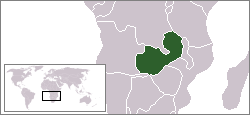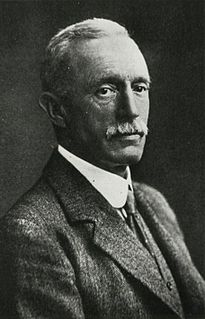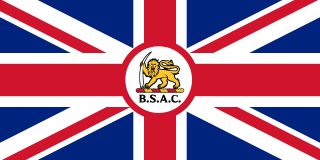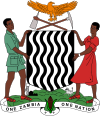
Zambia, officially the Republic of Zambia is a landlocked country in Southern-Central Africa. Its neighbours are the Democratic Republic of the Congo to the north, Tanzania to the north-east, Malawi to the east, Mozambique to the southeast, Zimbabwe and Botswana to the south, Namibia to the southwest, and Angola to the west. The capital city is Lusaka, located in the south-central part of Zambia. The population is concentrated mainly around Lusaka in the south and the Copperbelt Province to the northwest, the core economic hubs of the country.

Northern Rhodesia was a protectorate in south central Africa, formed in 1911 by amalgamating the two earlier protectorates of Barotziland-North-Western Rhodesia and North-Eastern Rhodesia. It was initially administered, as were the two earlier protectorates, by the British South Africa Company (BSAC), a chartered company, on behalf of the British Government. From 1924, it was administered by the British Government as a protectorate, under similar conditions to other British-administered protectorates, and the special provisions required when it was administered by BSAC were terminated.

The Colony of Southern Rhodesia was a self-governing British Crown colony in southern Africa which was established in 1923 from British South Africa Company territories lying south of the Zambezi River. This southern portion, known for its extensive gold working, was first annexed by the BSAC's Pioneer Column on the strength of a Mineral Concession extracted from its Matabele overlord, Lo Bengula, and various mostly Mashona vassal chiefs in 1890, though parts of the territory were laid claim to by the Bechuana and Portugal; its first people, the Bushmen or 'Khoisan' had possessed it from the very beginning of prehistory and still inhabited parts of it. Following the colony's unilateral dissolution in 1970 by the then government of Rhodesia, it was re-established in 1979 as the successor state of the Republic of Zimbabwe Rhodesia, and was the predecessor state of The Republic of Zimbabwe. Its only true geographical borders are the Zambezi and Limpopo Rivers, its other boundaries being more or less arbitrary and merging imperceptibly with the peoples and domains of earlier chiefdoms from pre-colonial times.
This article deals with the disputed area on the borders of the Democratic Republic of the Congo and Zambia, in Luapula Province.
The British South Africa Company was established following the amalgamation of Cecil Rhodes' Central Search Association and the London-based Exploring Company Ltd which had originally competed to exploit the expected mineral wealth of Mashonaland but united because of common economic interests and to secure British government backing. The company received a Royal Charter in 1889 modelled on that of the British East India Company. Its first directors included the Duke of Abercorn, Rhodes himself and the South African financier Alfred Beit. Rhodes hoped BSAC would promote colonisation and economic exploitation across much of south-central Africa, as part of the "Scramble for Africa". However, his main focus was south of the Zambezi, in Mashonaland and the coastal areas to its east, from which he believed the Portuguese could be removed by payment or force, and in the Transvaal, which he hoped would return to British control.

Rhodesia is a historical region in southern Africa whose formal boundaries evolved between the 1890s and 1980. Demarcated and named by the British South Africa Company (BSAC), which governed it until the 1920s, it thereafter saw administration by various authorities. It was bisected by a natural border, the Zambezi. The territory to the north of the Zambezi was officially designated Northern Rhodesia by the company, and has been Zambia since 1964; that to the south, which the company dubbed Southern Rhodesia, became Zimbabwe in 1980. Northern and Southern Rhodesia were sometimes informally called "the Rhodesias".

North-Eastern Rhodesia was a British protectorate in south central Africa formed in 1900. The protectorate was administered under charter by the British South Africa Company. It was one of what were colloquially referred to as the three Rhodesian protectorates, the other two being Southern Rhodesia and Barotziland-North-Western Rhodesia. It was amalgamated with Barotziland-North-Western Rhodesia, another territory administered by the British South Africa Company, to form Northern Rhodesia in 1911.

The Lozi people, or Barotse, are a language group of more than 46 different ethnic groups primarily of western Zambia, inhabiting the region of Barotseland. Lozi is also a nationality of the people of Barotseland. It is not a tribe. The Lozi people number approximately 3,575,000. Lozi are also found in Zambia, Namibia, Angola, Botswana, Mozambique (50,000), and Zimbabwe (8,000). The Lozi are also known as the Malozi, Kololo, Makololo, Barotose, Rotse, Rozi, Rutse, or Tozvi. The Lozi speak Silozi, a central Bantu language.

Barotseland is a Kingdom between Namibia, Botswana, Zimbabwe, Zambia and Angola. It is the homeland of the Lozi people or Barotse, or Malozi, who are a unified group of over 20 individual formerly diverse tribes related through kinship, whose original branch are the Luyi (Maluyi), and also assimilated northern Sotho tribe of South Africa known as the Makololo.
The Copperbelt strike of May 1935 was a strike by African mineworkers in the Copperbelt Province of Northern Rhodesia on 29 May 1935 to protest taxes levied by the British colonial administration. The strike involved three of the province's four major copper mines: those in Mufulira, Nkana and Roan Antelope. Near the latter, six protesters were killed by police and the strike ended. Although it failed, the strike was the first organized industrial agitation in Northern Rhodesia and is viewed by some as the first overt action against colonial rule. It caught the attention of a number of African townsmen, leading to the creation of trade unions and African nationalist politics, and is seen as the birth of African nationalism.

The Congo Pedicle is the southeast salient of the Katanga Province of the Democratic Republic of Congo which divides neighbouring Zambia into two lobes. In area, the pedicle is similar in size to Wales or New Jersey. 'Pedicle' is used in the sense of 'a little foot'. 'Congo Pedicle' or 'the Pedicle' is also used to refer to the Congo Pedicle road which crosses it.

Sir Alfred Sharpe was Commissioner and Consul-General for the British Central Africa Protectorate and first Governor of Nyasaland.

Sir Robert Edward Codrington was the colonial Administrator of the two territories ruled by the British South Africa Company (BSAC) which became present-day Zambia. He was Administrator of North-Eastern Rhodesia, based at Fort Jameson, now Chipata, from 11 July 1898 to 24 April 1907, and then of North-Western Rhodesia, based at Livingstone from February 1908 to his death in London on 16 December 1908 from heart disease at age 39. He laid the foundation for the amalgamation of the two territories as Northern Rhodesia four years later.

This is a survey of the postage stamps and postal history of Zambia, formerly known as Northern Rhodesia.

The British South Africa Company's administration of what became Rhodesia was chartered in 1889 by Queen Victoria of the United Kingdom, and began with the Pioneer Column's march north-east to Mashonaland in 1890. Empowered by its charter to acquire, govern and develop the area north of the Transvaal in southern Africa, the Company, headed by Cecil Rhodes, raised its own armed forces and carved out a huge bloc of territory through treaties, concessions and occasional military action, most prominently overcoming the Matabele army in the First and Second Matabele Wars of the 1890s. By the turn of the century, Rhodes's Company held a vast, land-locked country, bisected by the Zambezi river. It officially named this land Rhodesia in 1895, and ran it until the early 1920s.
The Anglo-Portuguese Treaty of 1891 was an agreement between the United Kingdom of Great Britain and Ireland and Portugal which fixed the boundaries between the British Central Africa Protectorate, and the territories administered by the British South Africa Company in Mashonaland and Matabeleland and North-Western Rhodesia and Portuguese Mozambique, and also between the British South Africa Company administered territories of North-Eastern Rhodesia, and Portuguese Angola.

The Bledisloe Commission, also known as the Rhodesia-Nyasaland Royal Commission, was a Royal Commission, appointed in 1937 and undertaking its enquiries between 1937 and 1939. to examine the possible closer union of the three British territories in Central Africa, Southern Rhodesia, Northern Rhodesia and Nyasaland. These territories were to some degree economically inter-dependent, and it was suggested that an association would promote their rapid development. Its chairman was Lord Bledisloe.
The North-Eastern Rhodesia Gazette was the government gazette of North-Eastern Rhodesia.

Barotziland-North-Western Rhodesia was a British protectorate in south central Africa formed in 1899. It encompassed North-Western Rhodesia and Barotseland.













